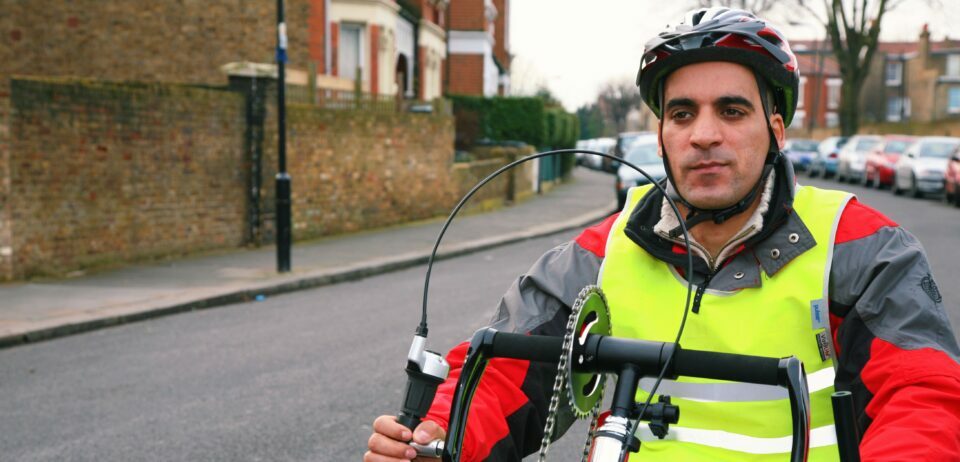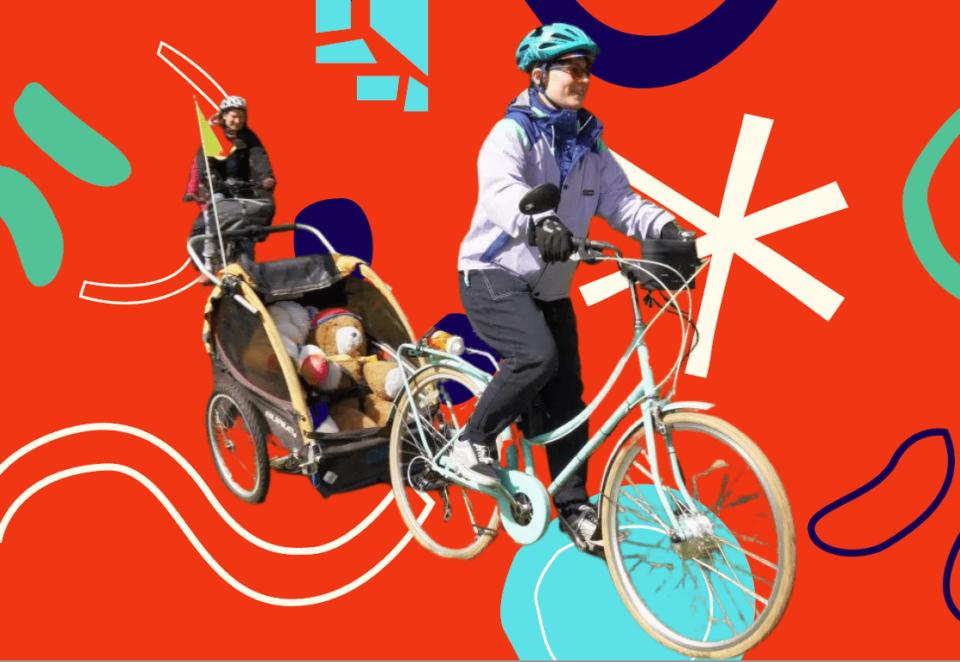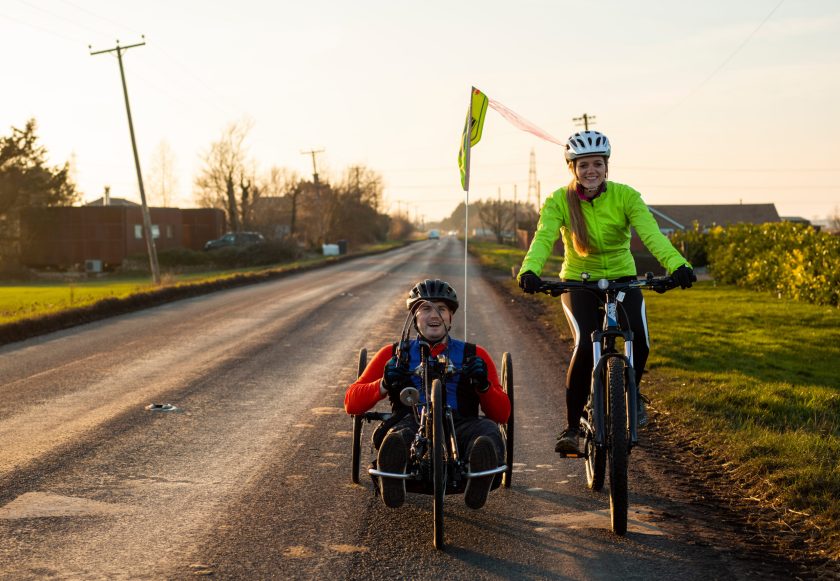
What do we mean by cycling?
We use the term ‘cycling’ to acknowledge that many disabled people use adapted cycles which may not have two wheels. Cycling therefore refers to journeys made on any type of cycle, including trikes, handcycles, cargo-bikes, two-wheeled pedal bikes, e-bikes, recumbents, and tandems.
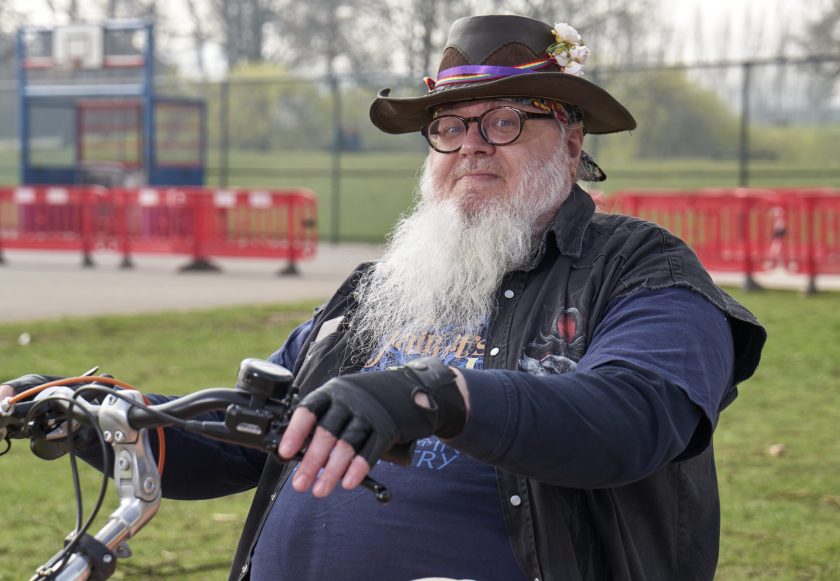
Policy background
According to the National Travel Survey, disabled people make an average of just 2 journeys per year by cycling, compared with 17 for a non-disabled person (over eight times as many!) (Department for Transport). This average figure somewhat masks the diversity in experience. Many disabled people are avid cyclists, some finding cycling more accessible and easier than walking and wheeling. However, the majority (as many as 84% according to data from 2017) of disabled people never cycle. (Sustrans)
- A survey of disabled cyclists by Wheels for Wellbeing found that 51% of respondents have been unable to complete a journey due to inaccessible cycle routes. A further 32% had been unable to park their non-standard cycle.
- 31% of respondents said they have been unable to buy a non-standard cycle because the one they wanted was too expensive. Cost and lack of suitable options also precluded cycle hire, despite 44% wanting to hire cycles more often. (Wheels for Wellbeing)
- 65% of respondents use their cycle as a mobility aid, with 64% finding cycling easier than walking. 49% of those have been asked to dismount while using their cycle as a mobility aid (Wheels for Wellbeing)
Barriers to cycling for disabled people
- 20%
- say cycling infrastructure that is not suitable for adapted cycles.
- 58%
- say they cannot cycle due to their health condition or impairment
- 35%
- say road safety and danger of collision is a barrier to cycling.
- 12%
- have experienced hate crime or anti-social behaviour while cycling.
58% of disabled people said they could not cycle due to their impairment, making it the most common barrier. While this framing contrasts with our own use of the Social Model (that we are disabled by barriers rather than our impairment) we chose to include this option in our survey due to strong feedback from workshop participants.
It is important to acknowledge this, whilst also working to remove barriers for disabled people who do want to cycle.
The second most common barrier was dangerous roads and the risk of collision (35% of respondents). Some said that they were made to feel unsafe by poor driver behaviour and a lack of segregated cycling routes. Others also said their impairment put them at higher risk (e.g., being easily thrown off balance or unable to hear traffic approaching from behind).
21% said that they didn’t have the skills or confidence to be able to cycle safely, and added that there were no adult classes available to help them improve. For some the safety risk came from other people, with 12% saying they were afraid of or had experienced antisocial behaviour or hate crime while cycling.
Poor cycling infrastructure was among one of the most common barriers. 27% said that there were too few cycle lanes, and 22% said that the ones available to them were often poorly maintained or obstructed.
20% also said that existing infrastructure was not suitable for adapted cycles, such as routes being too narrow. This is particularly concerning, given that 32% of those surveyed exclusively use a non-standard cycle.
Financial barriers prevented 13% of respondents from accessing a suitable cycle or storage space. Adapted cycles in particular can be prohibitively expensive, especially given the much higher living costs disabled people face.
8% also said that there were not enough opportunities to hire cycles, especially ones with adaptations, or tandem cycles with a pilot. This also deprived people of the opportunity to try an adapted cycle before committing to an expensive purchase.
For 22%, storing the cycle was a major barrier to cycling. A lack of parking spaces, especially for larger adapted cycles, meant that people had nowhere safe to store it. This then increased the risk of cycle theft, which was a barrier for a further 22%
18% of respondents said that they were impacted by a pervasive belief that disabled people don’t or can’t cycle. If held by decision makers, these attitudes can reinforce the physical barriers we face. If disabled people are believed to be inherently unable to cycle, accessible cycles and infrastructure don’t get funded. This then prevents us from being able to cycle, and the pattern continues.
For some disabled people, cycling is more accessible than walking or wheeling, with 24% of those who do cycle saying they use it as a mobility aid. There are however a number of barriers to using a cycle as a mobility aid, including cost, infrastructure, and stigma. 26% of disabled people who cycle said they would like to use their cycle as a mobility aid if barriers were removed.

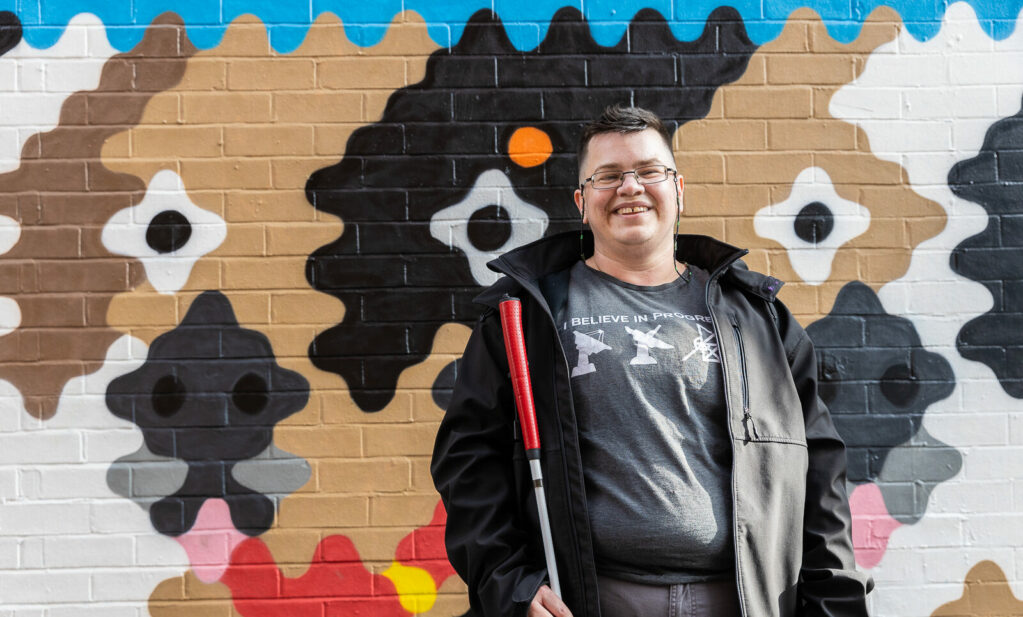
Support us
We can't do this without your support. Take action, give what you can, or sign up as a member - and join our movement of disabled people fighting for a better future.
